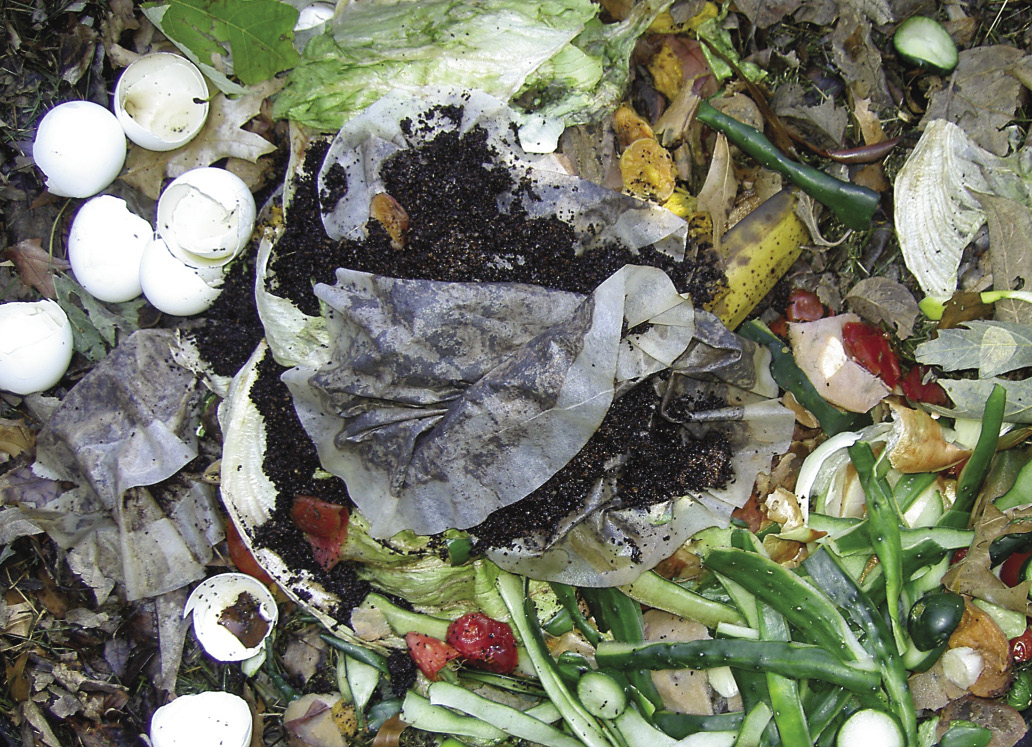If you’re like me, you can’t stand throwing away anything that might feed the soil. If you’ve been known to snag bags of leaves from beside the road, or take home coffee grounds from the office for your roses, keep reading, because I’ve got some ideas for you on composting almost everything without building a pile, buying a tumbler, tending worms, or measuring temperatures.
Composting doesn’t have to be a big deal. In its basic form, it’s just a process of rot nature has been performing for millennia without any help from gardeners with pitchforks and thermometers. Sure, you can build a compost pile, balance ratios, and work to get those handfuls of black gold, but if you don’t feel like all that hard work, take a page from my book and pop stuff back into the ground in one of these ridiculously easy ways.
Melon pits
One of my favorite methods for composting was inspired by Steve Solomon’s book, Gardening When It Counts. In it he describes how Native Americans used to bury their refuse and plant on top.
I’ve done the same on my homestead with melons and had great results, hence the nickname “melon pits.” We’ve planted squash, sunflowers, okra, and even trees in our melon pits and all have done well.
To create a melon pit, just dig a 2-3 foot deep hole and dump in rich material such as fresh manure, kitchen scraps, slaughter wastes, ashes, and more. I also bury chunks of wood that will rot into moisture reservoirs. Cover up the pit and water well to make sure the air pockets are filled, then plant with the crop of your choosing. Squash and melons make great choices because they’re normally planted on mounds and set free to wander. I’ve punched a hole in my grass, filled it with everything from old beef stew to chicken manure, then planted it with watermelons and had them spread luxuriously across my weedy lawn and bear without any supplemental fertilizer and very little water.
This is a dead-simple pile-free way to get rid of items that would be hard to compost conventionally or would be too hot for direct application to the garden. Just make sure you bury items like meat well so they aren’t discovered by animals. There’s nothing sadder than finding your vines pulled up by inquisitive possums.
Sheet composting
Sheet composting is another way to directly add compost to the soil. It has regained popularity lately due to the permaculture crowd and folks like Paul Gautschi, of Back to Eden fame, and Patricia Lanza, author of Lasagna Gardening. Both of their methods, in turn, are pre-dated by Ruth Stout’s “deep mulch” method of throwing around lots and lots of straw as mulch.
Beyond typical mulches like wood chips and straw, however, it’s easy to incorporate a lot of “waste” materials from around the house.
I prefer soil to mulch in my annual gardens due to the sheer size of the space I garden. However, I am a big believer in mulching around the fruit trees and shrubs in my food forest. To add fresh materials to a mulched area is easy: just rake back a patch, dump in the new stuff, then recover with mulch.
I wouldn’t use meat or animal-attracting substances (no liverwurst!) with my sheet composting, but I do use non-glossy junk mail, carrot peels, weeds, eggshells, paper plates, etc., then cover them up with mulch and allow them to compost right in place. This makes a lot more sense to me than making a compost pile and later hauling finished compost out to my trees. Why not let the rain and the worms deliver nutrients right to the roots?
Liquid compost fertilizer barrels
With some hot materials such as chicken manure, I’ve found that making a rough “compost tea” in a big barrel will dilute the nitrogen and salt levels down to the point where I can foliar feed my gardens without worrying about torching my tender cucumbers.
To get started, just get a big 55-gallon drum and put it near where you’ll be feeding. Throw in spent greens, a few shovelfuls of manure, or even a couple gallons of urine, then fill it the rest of the way with water and let it sit for a week or more. I also add a couple of cups of Epsom salts for magnesium and sulfur. Then get yourself a couple of watering cans, dip them in the stinky barrel of fertility, and water everything that needs some of the good stuff.
Some folks will tell you that anaerobic compost tea isn’t good for your plants and you need to have a bubbler going in the water, but I’ve never seen any ill effects. In fact, I’ve seen the opposite. I grew corn in lousy gray sand and fed it every two weeks with anaerobic compost tea poured down the rows. It grew magnificently, even though that tea and whatever rain fell from the sky was the only watering it received.
If it’s enough fertilizing for a hungry plant like corn, it’s probably enough for anything else.
David The Good is the author of four books including Compost Everything: The Good Guide to Extreme Composting and Grow or Die: the Good Guide to Survival Gardening (both available on Amazon). He’s also the creator of the popular website www.thesurvivalgardener.com. David and his wife Rachel currently live somewhere in the great state of Florida on a productive one-acre homestead covered with fruit and nut trees, garden beds, lizards, mosquitoes, and children.


